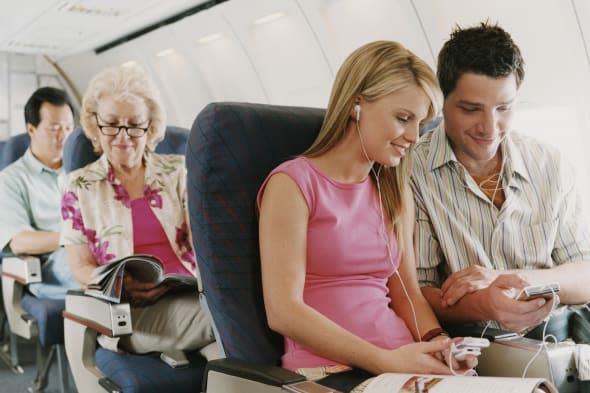Coping with long haul flights

Pic: Getty Images
Jetting off to far-flung destinations is one of the luxuries of modern life, but in order to see those exotic sites, you must first endure the long-haul flight.
If you are gearing up for a long plane journey, here are a few tips on how to stay comfortable and ease the boredom.
Related Searches
Pick your seat
Unless you're lucky enough to be flying first class, choosing the right seat is a must. If you're in the wrong place for a long haul flight, it'll only make the journey seem even longer. Which seat you prefer is, of course, dependent on your personal preference. Those who want to be able to get up and move around freely should choose an aisle seat, while if peace and sleep if what you desire, a window seat is almost certainly the best option.
In terms of space, you may find that front-row seats offer more leg room, as long as you don't mind in-flight entertainment that folds out from the arm rest, and it is often the seats near the front that get served first when it comes to meals and drinks. Those positioned near the emergency exits, on the other hand, are often lumbered with restricted reclining abilities. If possible, find your perfect place by checking the aircraft's seating plan at the time of booking.
Be comfy
When you're stuck on an aircraft for hours at a time, comfort is vital. Leggings or loose-fitting trousers are ideal, while natural fabrics will help to reduce sweating. Since ankles tend to swell slightly when at high altitude, you may find it more comfortable to kick off your shoes during the flight.
Even if you're flying somewhere hot, it is wise to bring some warm clothing for the flight itself, since things can quickly get chilly when the air conditioning is blasting. Layers will help to keep you cosy. Don't forget you can always change into something more appropriate if you need to look fabulous when you disembark.
Pack the essentials
Some airlines provide passengers with travel essentials on board, but it's wise to bring your own little luxuries just in case. A toothbrush and toothpaste will allow you to freshen up during the flight, and ear plugs, lip balm, Paracetamol and an eye mask are all handy extras to carry with you. If you're planning to doze on the flight, a blow-up neck pillow affords a little added comfort.
If you're not a fan of airplane meals, pack some snacks for sustenance. Just bear in mind that if you're flying to countries such as the USA or Australia, you may not be able to bring food items in so everything must go during the flight itself.
Finally, though long-haul flights offer various movies and in-flight entertainment, there's no harm in bringing your own. An iPod or tablet allows you to choose your own music or movies, and a good book will help to pass the time more quickly.
What to eat
It can be tempting to eat everything put in front of you on a long flight - even if only to relieve the boredom - but try not to eat if you're not hungry. Stick to lighter, more easily digestible options to avoid feeling bloated and tired when you touch down, and avoid sugary snacks which can lead to energy dips. Wholegrain carbs and fruit and vegetables are a much better choice.
Stay well
Long hours seated on an aircraft do pose a risk of deep vein thrombosis (DVT), so it is important to keep the blood flowing to prevent clots on a long haul flight. If possible, stand up, stretch and move around for a short period every hour to keep the blood circulating. Flight socks are also a good idea, and when you are sitting down, moving your feet in a circular motion will help to reduce the risk of DVT. It is always worth checking the inflight magazine, as there are often tips and exercises to help you stay healthy.
%VIRTUAL-AFCSponserAds%
Stay hydrated
The air inside a pressurised cabin is very dry, and on a long haul flight it's easy to become dehydrated. Though there are restrictions on taking liquids onto flights, you can always bring an empty bottle and fill it with water on the plane. Of course the flight attendants will be only too happy to supply you with drinks, but it's best to avoid too much alcohol, caffeine or carbonated drinks, all of which can dehydrate you further.
Colds are more than 100 times more likely to be transmitted on a plane than during daily life on the ground, according to a study published in the Journal of Environmental Health. Colds in planes spread easily because of low humidity, which dries up the body's first line of defence - mucus. Sipping water to stay hydrated and washing your hands regularly can help. Some people also swear by nasal sprays (such as First Defence) which stop a cold before it has chance to develop.
Are you a regular long-haul flyer? What do you do to stay comfortable on a long flight? Leave your comments below...




